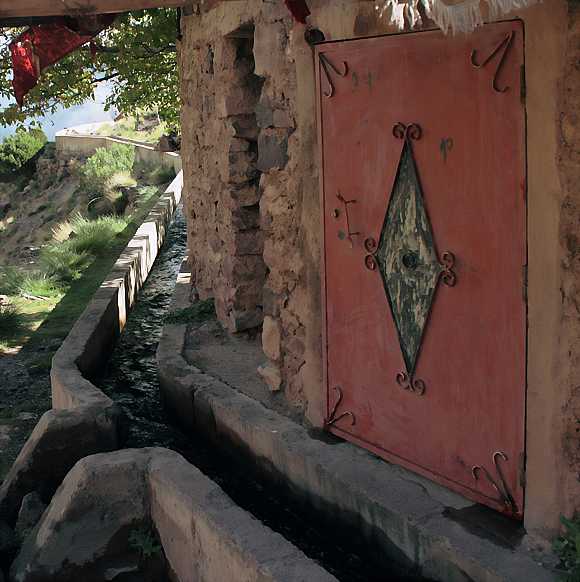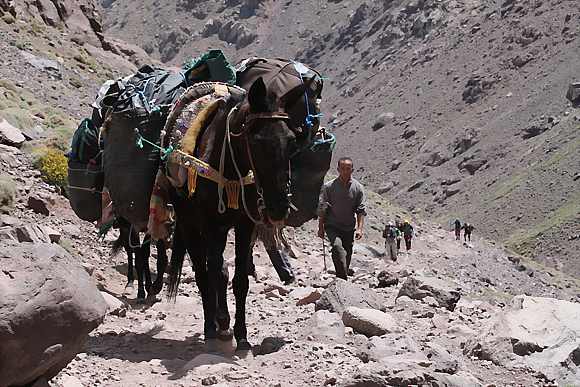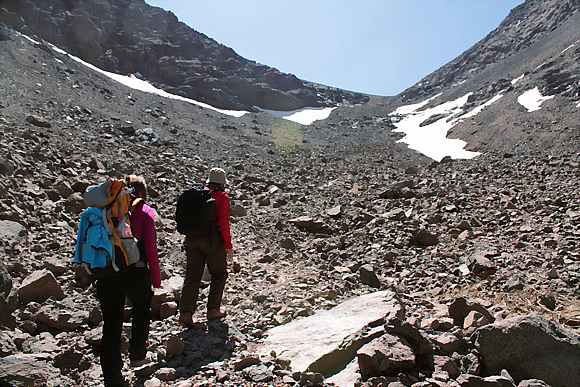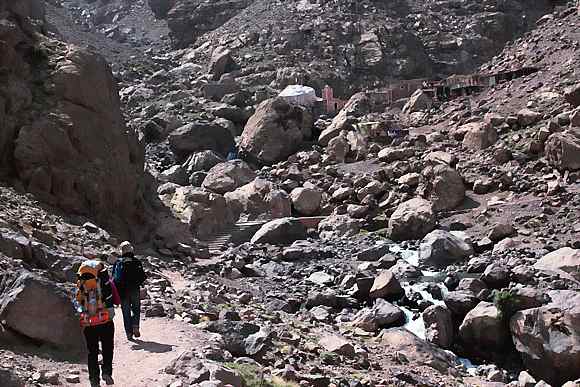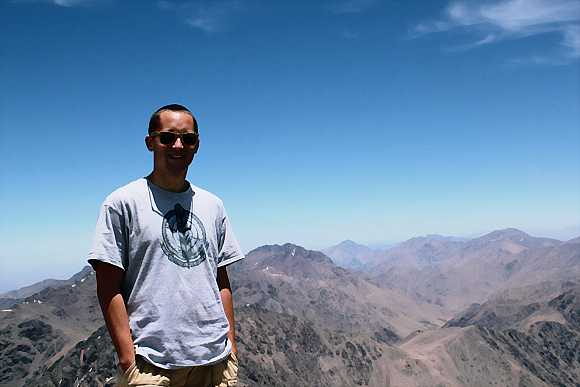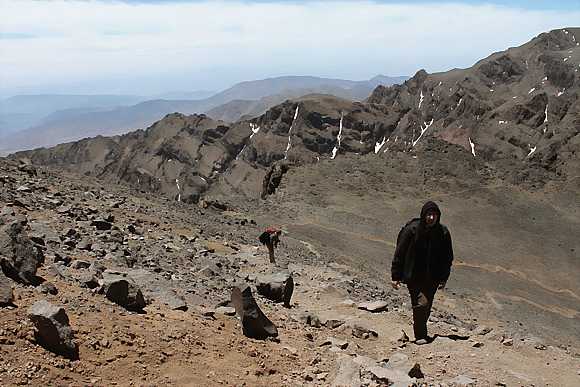Morocco Travel Contest
Picture Essaouira: a breezy town where, like in any other seaside village, the heart of the city lies at its outer edge. Imagine a broad ‘corniche’ – a boulevard made for promenading, for seeing and being seen – running alongside a sprawling beach that gives way to sparkling blue water. Just across the road, the visitor finds a long stretch of restaurants and hotels, each decorated with its own take on the white-and-blue theme that dominates this coastal town.
Below is the fifth entry for our June Morocco Travel Contest.
The contest will run for the entire month of June and the winner will receive 2 nights accommodation at Dar Othmane in the Fes Medina.
It’s a simple contest, just tell us about your favorite Morocco destination. Read all the details of the June Morocco Travel Contest
This entry comes from Charlotte who blogs at Bishaha.
Picture a bend in the road as the corniche curls to the left, heading for the town’s port, and picture the ochre walls of Essaouira’s medina rising up on the right – showing a glimpse of the white-and-blue theme that continues inside these old Portuguese walls. The corniche finally ends on a large square flanked by ramparts, another large stage set up at its far end, across from the bank. On the other end – the seaside end – imagine a few evergreen trees and small kiosks, where merchants grill fish and offer simple meals of sardines and shrimp to hungry tourists. There is no more beach; the water reaches right up to a concrete wall along the sidewalk. Picture a mix of tourists and local families seated on that wall, enjoying the last light of the day, and imagine groups of boys boisterously diving into the water, one after another, their dark, wet skin glistening in the sun. Feel the wind in your hair as you head into the narrow medina streets, and smell the saltiness in the air as it mixes with the smell of grilled fish and other seafood emerging from the restaurants and ‘snacks’ that line the street. Hear the seagulls clucking to one another as they fly overhead.
Picture three tourists – an Arab, a Berber, and a Gawriya – taking a stroll through Essaouira’s port at sundown. Dark blue wooden rowboats have already been anchored for the night, tied to another they are like a flock of ducks on the water, floating safely in a little walled basin close to the medina. Further down, larger fishing boats (likewise blue) have been moored along the single dock that comprises this port. Weathered men with browned faces and worn shirts haul the last fish from their vessels; though large and visibly heavy, they grab the silver, slippery bodies by the gills and carelessly toss them into carts waiting on shore. Along the Portuguese ramparts that protect the dock from the sea, other men – and the occasional woman – sell the day’s catch to passers-by. Sardines, crab, eels, stingrays with leopard-print skin.
The three tourists walk down the dock as it tapers to a narrow tip, braving strong winds and the pungent smell of seagull droppings. When there is no further to go, they climb the steep ramparts, a few meters in height, and stroll back toward the medina. Here and there they stop and look out over the oddly-shaped concrete breakers that prevent the waves from eating up these walls. The two men smoke a cigarette as the woman leans into the wind and watches the sunset.
Picture a scene at Essaouira’s yearly Gnaoua festival – a group of brightly colored musicians up on stage, swaying their heads just so, the tassels on their skullcaps effortlessly circling their head like propellers, dancers bending forwards, backwards, on the rhythm of the music. People from all walks of life seem to have gathered here this evening. You see European women in bright, revealing sundresses, and old jellaba’d men in white skullcaps. You watch dreadlocked tourists making the acquaintance of Moroccan Rastafarians as you are shoved around by overly energetic local teens. There are homeless children who try to sell single packs of tissues for a dirham each, veiled Moroccan mothers who have brought their own plastic stools to the concert, and young Moroccan girls who feel a bit intimidated by these large crowds and the cover they give to boys that are up to no good. You stand there amongst them all and watch them dance, no trace of the distance that usually separates strangers. Temporary friendships are made as Moroccan girls dance hand in hand with Dutch women, and eager local boys copy the dreadlocked Europeans who dance with an air of complete liberation. Look up: the airborne traffic of seagulls is as busy at night as it is by day. Illuminated by the street- and stage lighting, their winged bodies create a beautiful contrast against the black of the night sky.
Picture another sunset – this one on the Scala, the ramparts that protect the medina’s northern flank from the sea. Picture the ochre of the walls, highlighted by the light of the receding sun, contrasting beautifully with the deep blue of the ocean ahead. Watch families promenading up and down the ramparts, taking photographs of their children astride old canons that still stand at the ready between the turrets, keeping a watchful eye over the ocean. You reach a walled circular lookout point and hear gnaoua music, so you climb up the walkway and enter this space. Groups of local boys have gathered here to watch the sunset. They sit high atop the walls, and stand in the openings between the turrets. You spot the source of the music: on the far end, along the wall, a group of young men sits on the ground. One of them has a sintir and plays to the rhythm of the qraqeb, the metal cymbals that really define the gnaoua sound, worked by a few others. On either side of these musicians sits a boy, singing gnaoua melodies. You sit down and let yourself be carried away by the hypnotic tunes, and you look at their clothing – their Nike sneakers and Ed Hardy T-shirts creating an interesting contrast with this ancient-sounding music.
Picture a French-run coffee bar housed in an old stone building beside the medina walls, its large patio separated from the garden beyond by pillars spaced a few meters apart. It is about eleven o’clock at night, and as you walk by you are drawn by its inviting lantern light. You take a seat on one of the tan leather couches sprawled across this space and order hot chocolate. You lean back and listen to the tribal house, played by the DJ there in the corner. You wonder how this place can exude such calm, when the music’s beat reverberates through you at maximum volume. A few daring European tourists move toward the center of the patio and begin to dance – they twist, curl, grind, and shake in perfect harmony with the DJ’s rhythms, their limbs moving so freely, yet in such perfect coordination with one another. When you peel your eyes away from them, you notice that the music has attracted a crowd – a wall of onlookers now encloses the patio. Suddenly, the dance floor fills up, local boys taking over, once again enthusiastically mirroring the wild movements of dance around them. The crowd swells and swells – people on their way to see Cheb Khaled in concert, drawn in by the tribal rhythms just like you were. The crowd swells and swells and swells – and right when it’s at its peak, the dance floor clears out, the DJ winds down his session, and out steps a simply clad man with a large drum. Behind him, four others jump out. They are dressed in simple pants and wife beaters – all in white – and you get excited, because you see “essaouira capoeira” emblazoned on their shirts. And indeed: two by two, the men crouch, do a brief shake of hands, and jump out in a dazzling show of capoeira moves. Limbs are everywhere as they twist and turn in feigned fighting, a back-and-forth in perfect harmony, never touching another, but always keeping that tension alive.
Picture Nass el Ghiwane in performance on the beach. It is close to one AM, and all of Essaouira seems to have come out for this show. Nass El Ghiwane are the Moroccan Beatles, if you will. They sang politically sensitive songs in the 70s, to the great frustration of the late King Hassan II. Though the group is no longer complete (courtesy of a few deaths), their poignant lyrics and use of traditional North African instruments and rhythms has lent them everlasting fame. Their songs are played everywhere and known by everyone – tonight, all generations are present, and all sing along with equal enthusiasm. You dance with the friends you came with and the new ones you made, joining their singing with the few lines that you know. This is the largest crowd you have seen yet at this festival, but the atmosphere is communal, friendly. Once in a while, a wave of running boys stirs the crowd – a new fight has broken out, and excited onlookers chase the brawling pair to the waterside to fight in peace.
And finally, picture the sparkling water, starry night, and perfect music, all of which fill you with a tranquil happiness you hope to hold on for a long time to come.
morocco culture,moroccan food,morocco food,moroccan cuisine,morocco beaches,moroccan meal,beaches in morocco,moroccan culture,hercules cave,hercules cave morocco


